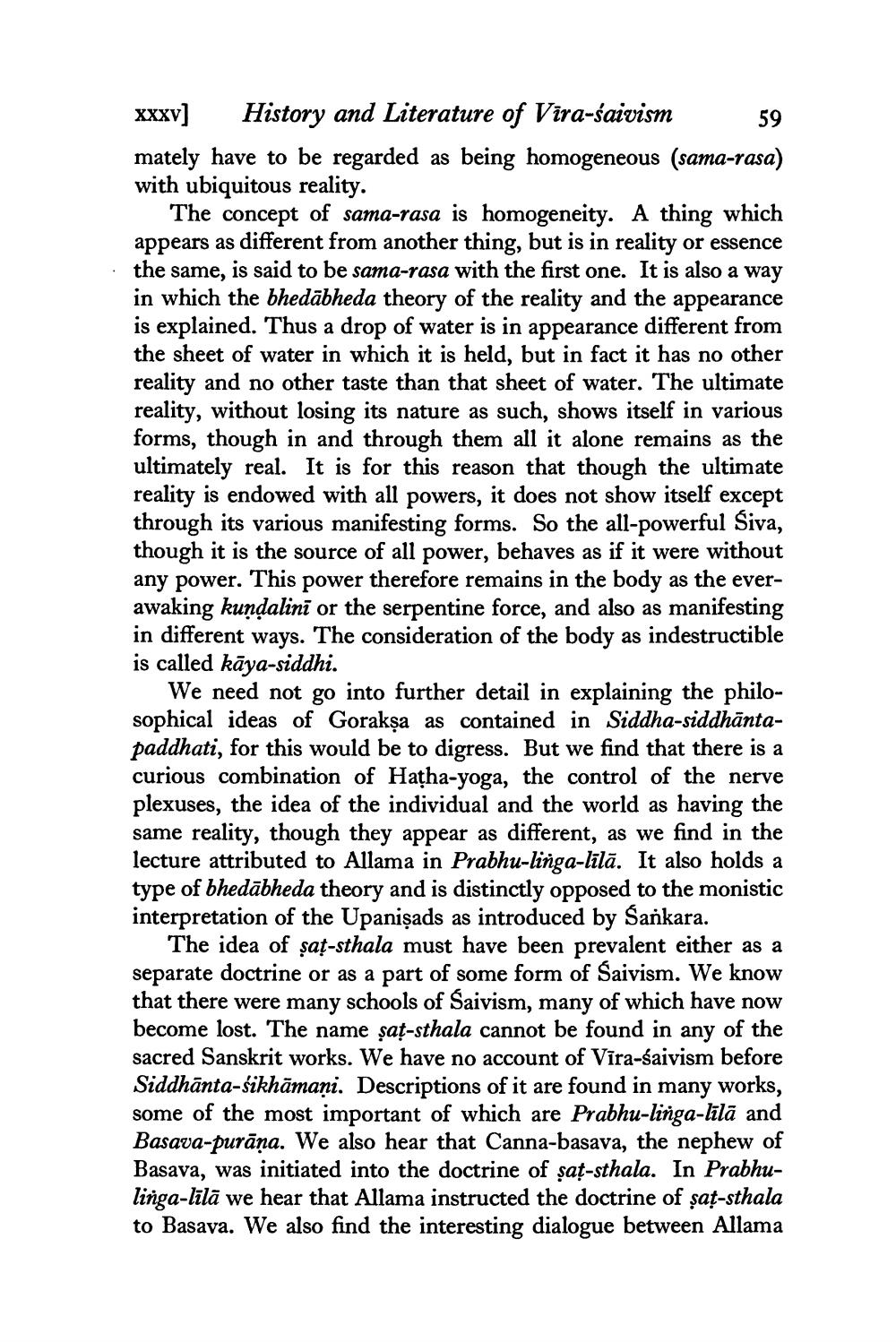________________
XXXV] History and Literature of Vira-saivism 59 mately have to be regarded as being homogeneous (sama-rasa) with ubiquitous reality.
The concept of sama-rasa is homogeneity. A thing which appears as different from another thing, but is in reality or essence the same, is said to be sama-rasa with the first one. It is also a way in which the bhedābheda theory of the reality and the appearance is explained. Thus a drop of water is in appearance different from the sheet of water in which it is held, but in fact it has no other reality and no other taste than that sheet of water. The ultimate reality, without losing its nature as such, shows itself in various forms, though in and through them all it alone remains as the ultimately real. It is for this reason that though the ultimate reality is endowed with all powers, it does not show itself except through its various manifesting forms. So the all-powerful Śiva, though it is the source of all power, behaves as if it were without any power. This power therefore remains in the body as the everawaking kundalini or the serpentine force, and also as manifesting in different ways. The consideration of the body as indestructible is called kāya-siddhi.
We need not go into further detail in explaining the philosophical ideas of Gorakṣa as contained in Siddha-siddhāntapaddhati, for this would be to digress. But we find that there is a curious combination of Hatha-yoga, the control of the nerve plexuses, the idea of the individual and the world as having the same reality, though they appear as different, as we find in the lecture attributed to Allama in Prabhu-linga-līlā. It also holds a type of bhedābheda theory and is distinctly opposed to the monistic interpretation of the Upanişads as introduced by Sankara.
The idea of șaț-sthala must have been prevalent either as a separate doctrine or as a part of some form of Saivism. We know that there were many schools of Saivism, many of which have now become lost. The name sat-sthala cannot be found in any of the sacred Sanskrit works. We have no account of Vīra-saivism before Siddhānta-śikhāmaņi. Descriptions of it are found in many works, some of the most important of which are Prabhu-linga-līlā and Basava-purāņa. We also hear that Canna-basava, the nephew of Basava, was initiated into the doctrine of sat-sthala. In Prabhulinga-līlā we hear that Allama instructed the doctrine of șaț-sthala to Basava. We also find the interesting dialogue between Allama




